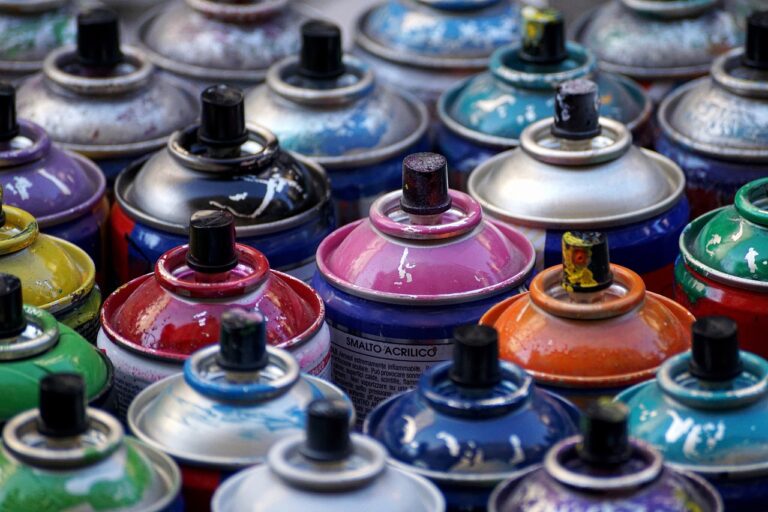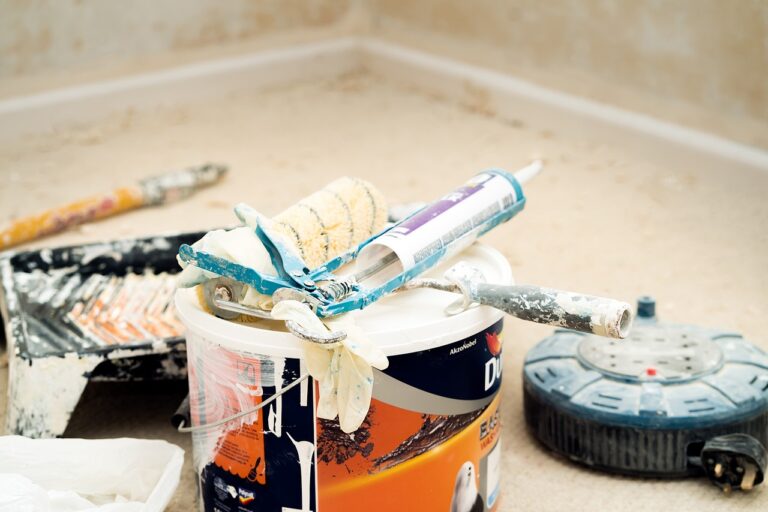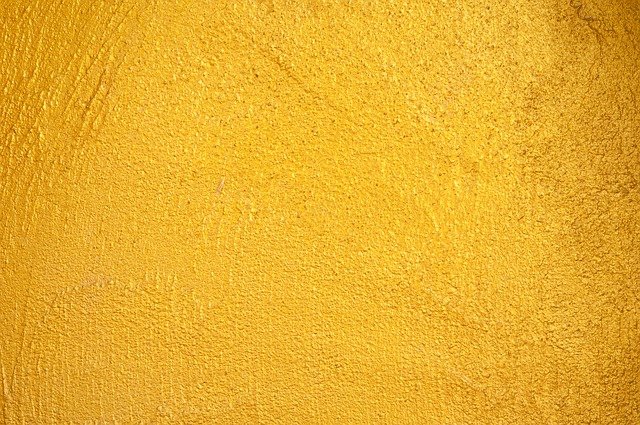Does Nail Polish Remover Remove Paint?
Perhaps you work in the cosmetic industry and often use nail polish in one way or another. You could even have polished your nails and effectively cleaned using nail polish remover. Or else, you wonders, which other methods can nail polish remover, be used for. 
So, does nail polish remover remove paint? Simply, YES. Nail polish remover is a solvent compound manufactured to breakdown the synthetic resins, nitrocellulose, and plasticizers found in the hard nail polish coating for easier cleaning.
The active agent in this product is usually Acetone (for acetone-based nail polish remover), which is responsible for breaking down the molecular bonds in the paint. Indeed, the solvent entails ingredients that have a complicated formula, which is self-activating upon application.
Nail Polish remover works best for latex-based paint, uncured paint, and oil-based paint. Its high penetration capacity and bond braking affinity make this compound superior as an alternative option for paint removal.
Moreover, Nail Polish Remover can be used on surfaces such as Painted walls, finished wood, sealed stones, tires, ceiling, glass, polished metal, bathtubs, concrete floors, laminated furniture, windowpanes, oil sealants, leather material, kitchen sinks, carpets, and plastic material.
Details: Does Nail Polish Remover Remove Paint
However, it’s not advisable to use nail polish remover on surfaces such as fresh wood, unsealed stones, suede material, naked fire surface, cushioned material, gas pipes, and multi-colored surfaces.
Further, you will need to wear a respirator and hand gloves since nail polish remover cause skin irritation and respiratory discomfort upon inhalation.
a. Active ingredients in Nail Polish Remover
Nail polish remover is a solvent compound that features a complex carbon-based formula that breaks down traces of synthetic resins, nitrocellulose, and plasticizers found in the hard nail polish coating for the more straightforward removal process.
Most nail polish removers are usually acetone-based (though others are natural), integrating high penetrant properties that work for thin and thick paint layers virtually upon application. Further, this compound comes in a clear solution (allows easier visibility) that is quick-acting and less toxic.
Acetone easily mixes with water, thus giving room for optional dilution to the best application concentration. Nail polish remover is further integrated with self-activating ingredients that act without wetting the surface under paint removal.
b. Types of paint removed by Nail Polish Remover
Nail polish remover works effectively in the paint removal process in 2 to 5 minutes after application. As an organic-base compound, it will clean the following types of paints:
- Latex-based paints and Oil-based paint
- Acrylic paints and Enamels
- Uncured paints
The unique structural formulation that comes with nail polish removal makes it easier to dissolve in the oil and water-based paints, unlike most paint removal compounds.
However, most nail polish removers are packed in small containers, thus would be suitable for cleaning small patches of paints.
When carrying out the paint removal process, it’s necessary to consider other factors such as the nature of the surface and the concentration needed since thick paint coating may require more application for effective removal.
Besides, avoid using nail polish remover on surfaces discredited in this article for the safety of the surfaces under paint removal.
c. Areas of use/Application Surfaces
Nail polish remover works best on surfaces such as painted walls, laminated furniture, finished wood, sealed stones, tires, ceiling, glass, polished metal, bathtubs, concrete floors, kitchen sinks, windowpanes, oil sealants, leather material, carpets, and plastic material.
Upon application, the nail polish remover breaks the paint layer without affecting the surface of the material under paint removal. However, before carrying out the paint removal process on a given surface, it’s crucial to do a drop test to ascertain that the particular surface will work effectively without having an adverse test reaction.
Remember, different materials have a varying response to nail polish remover. Therefore, you should always be keen on the type of paint under removal – you can remove water-based paints without using nail polish unless need be.
d. Avoid Nail Polish Application in These Areas
Nail polish remover doesn’t work on surfaces such as fresh wood, unsealed stones, suede material, naked fire surface, cushioned material, gas pipes, and multi-colored surfaces. Usually, this compound stains the surfaces, react with the material, or even corrode the area upon application.
Bearing in mind that nail polish is not manufactured for paint removal, you should only use it only on the surfaces advised in this article after the drop test experiment. Besides, this solvent is best used for small surface paint removal, where its uneconomical to buy a full container of paint removal.
NB: Printed surfaces are highly affected by nail polish remover. An alternative method, such as thinner, can be used in the right quantity and concentration.
e. Precautions to Consider when using Nail Polish Remover
Nail polish removal is a poisonous compound (when swallowed) that causes skin irritation (on contact) and respiratory discomfort when inhaled. You will need to observe the following precaution during the application.
- Wear a respirator – prevents choking and nasal irritation.
- Wear gloves – prevents skin burn and irritation upon contact.
- The application should take place in a well-ventilated room/area.
- Avoid applying near the fireplace or open fire – nail polish remover is flammable.
- Keep away from children and pets – poisonous.
- In case of contact, wash the area with excess cold water and soap.
Having can holder during application is the best practice if possible. However, hand application works perfectly if the right procedure is followed to the dot, as highlighted in this article.
Procedure to Follow when Using Nail Polish Remover for Paint removal
For effective and efficient paint removal when using nail paint remover, you will need to follow the procedure highlighted below. Besides, you need to have the following items: the nail polish remover, paintbrush, clean water, soap detergent, scrapper/razor blade, respirator, sponge/piece of cloth, and gloves.
- Pre-clean the surface you intend to remove paint – you can wipe with a wet cloth or paintbrush for remover existing surface debris.
- Carry out a drop test experiment to ascertain that the surface is suitable for nail polish remover use
- Cover the painted surface with nail polish remover – you can spread using the paintbrush.
- Leave the surface to quench for 2 to 5 minutes – this is necessary for thick layer paints to enable complete breaking of paint molecular bonds.
- Using the scrapper, scrap the etched paint layer.
- Clean off the paint debris from the surface using the paintbrush
- Soak the sponge in soap detergent and clean the surface further – this helps eliminates the fine paint particle and oil component of nail polish remover from the body.
- Finally, soak a pair of cloth in clean water and wipe the surface to dryness.
Repeat the above procedure for any other surfaces when removing paint. It is essential to recognize that some surface finish may not be spotless after removal due to micro-structure integration with paint molecules for long.
For effective paint removal, you must check the paint layer thickness and add the nail polish remover in proportionate quantity – this process is self-determined by the user. Consider other means of paint removal if the area is too big (for economic reasons).
Other Better Uses of Nail Polish Remover
Apart from removing nail polish and paint on surfaces, nail paint remover has other ways you can put it into use. These include:
- Removing scuff marks on the carpets or floors –smear the affected area and wash in clean soapy water.
- Cleaning paint on glass/metal window – pour nail polish on sponge, wipe the painted area before cleaning with soapy water.
- Eliminating scratches on the watch display – smear a drop of nail polish remover on the surface and clean softly. Avoid excess of it as it can destroy the clarity of the presentation.
- Cleaning permanent marker marks – rub the stained area with nail polish remover and later clean with soapy water.
- Removing sticker from the plastic, metal, or glass surfaces – smear nail polish remover on the sticker area, rub with a wet cloth before cleaning with soapy water.
- Removing ink stains and melted wax – smear the nail polish remover over the stained area or waxed surface. Then, clean with a soaked wet cloth (with soap) and wipe to dryness using a clean piece of fabric.
- Remove super glue – rub the nail polish remover over the super glue area till it’s entirely removed, then clean with soapy water.
- Cleaning leather shoes – swab nail polish remover over the leather shoes and leave it to vaporize. This will leave a shiny surface coating that is dirt-resistant and sparkling.
What are the Best Substitutes for Nail Polish Remover in Removing Paint?
There are several options available in the current market, which can be used as a substitute for nail polish remover in paint removal. Some of these are listed as follows:
1. Mineral spirit
Mineral spirit is a petroleum-based organic compound that features a unique structural formulation that works best in cleaning greased surfaces, removing paint pills, paint prep, thinning paint, and stain removal.
The solvent is coupled with unmatched advantages such as transparent look, less toxic, budget-friendly, more effective, less smelly, and versatile all-round thinner – which makes it more common in the current market than other paint removers.
However, Mineral spirits are poisonous and cause skin and nasal irritation – one requires a respirator and hand gloves during application for safety purposes. Besides, this product is not suitable for water-based paint (e.g., latex paints).
2. Denatured alcohol
Unlike nail polish remover, denatured alcohol is a lighter solvent that evaporates fast upon application. It works by liquefying the paint layer, thus making it easier to wipe or clean it off.
Denatured alcohol/rubbing alcohol is best used for latex paint and water-based paint removal process. The product can be used on surfaces such as painted walls, laminated furniture, sealed stones, vehicle body parts, stained floors, rooftops, finished woods, and polished metal.
You will need to maintain a concentration of 70% to 90% ethyl alcohol for effective paint removal. The proper application procedure must be adhered to avoid the destruction that occurs to surfaces due to excess solvent addition.
Unfortunately, denatured alcohol should not be used on surfaces such as aluminum, unsealed surfaces, unfinished surfaces, wallpapers, leather, and perplex glasses. This solvent may react, destroy, or stain such surfaces upon application.
3. Sunnyside 63532 2-Minute Remover Advanced Paint & Varnish Remover
Sunnyside is a quick-acting paint remover that comes in a safe liquid state, which is methylene and chloride free. The solvent integrates a unique molecular formula that breaks a thick paint layer in 2 minutes.
Indeed, Sunnyside is packed in a large container (covers a large area) that is highly portable and stable. You can confidently use Sunnyside on surfaces such as finished wood, painted walls, metal, marine, automobile finish, and rooftops.
Importantly, Sunnyside removes shellac, varnish, epoxy, polyurethane, latex, and oil-based paint without much problems.
4. Super Nail Pure Acetone Polish Remover
Super nail is a reliable nail polish remover that features an instant action solvent solution that is self-activating upon contact. The product integrates a complex structural formula, which works for thick and thin surface coating without much hassle.
Besides, Super nail can either be used for nail polish removal or paint removal. The classic can design allow precision application and improved portability when in use. More so, Super nail is less smelly, highly efficient, and more economical as compared to other nail polish removers in the market.
NB: Super nail is acetone-based and thus guarantees you of the excellent paint removal action.
Conclusion
Nail polish remover can remove paint. The solvent features a robust and active agent, i.e., Acetone (acetone-based nail polish remover), which breaks down the molecular bonds in color into a thick viscous liquid that is easier to clean.
Nail Polish remover works best to remove latex-based paint, uncured paint, and oil-based paint on surfaces such as finished wood, sealed stones, tires, ceiling, glass, polished metal, bathtubs, concrete floors, and laminated furniture.
However, avoid using Nail polish on surfaces such as unsealed stones, suede material, naked fire surface, cushioned material, and gas pipes since it can cause corrosion, stains, or trigger fire. Importantly, follow the procedure highlighted in this article during the application process to achieve the best results.





